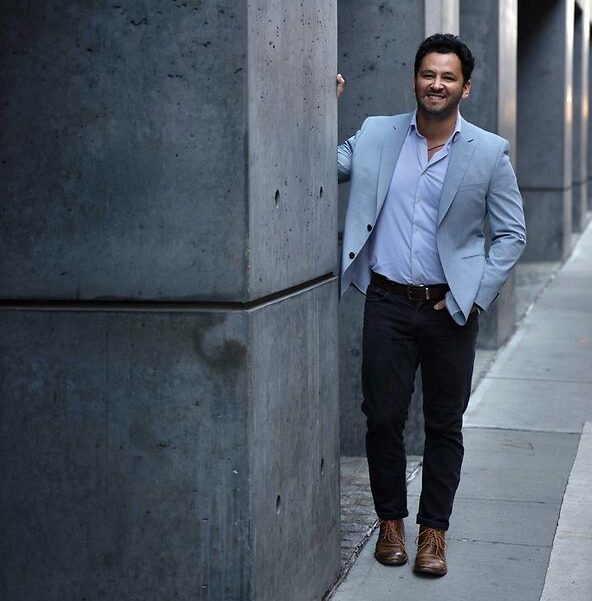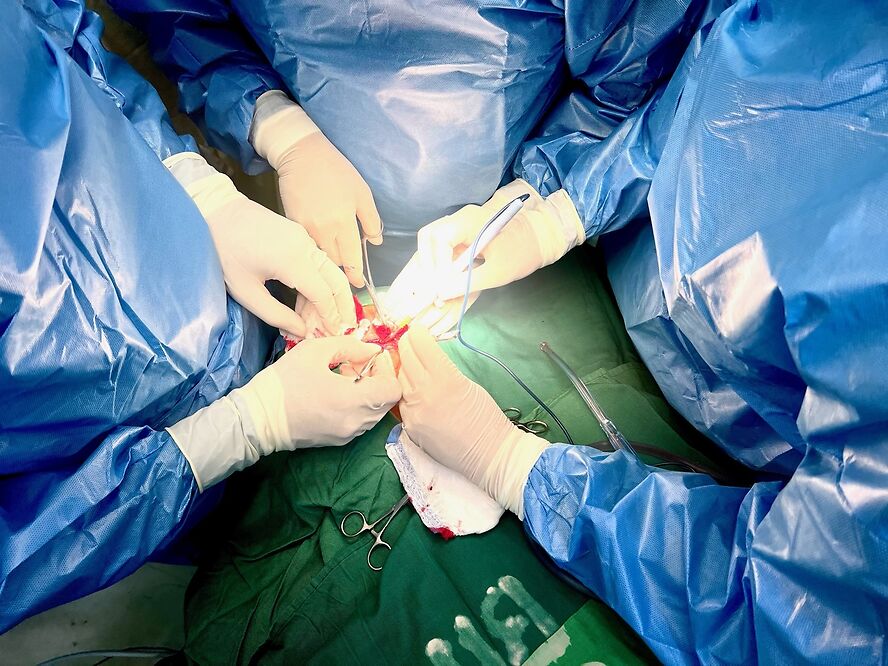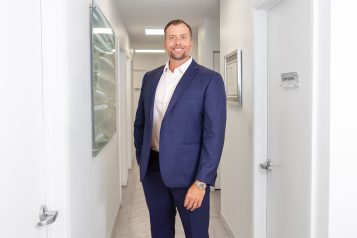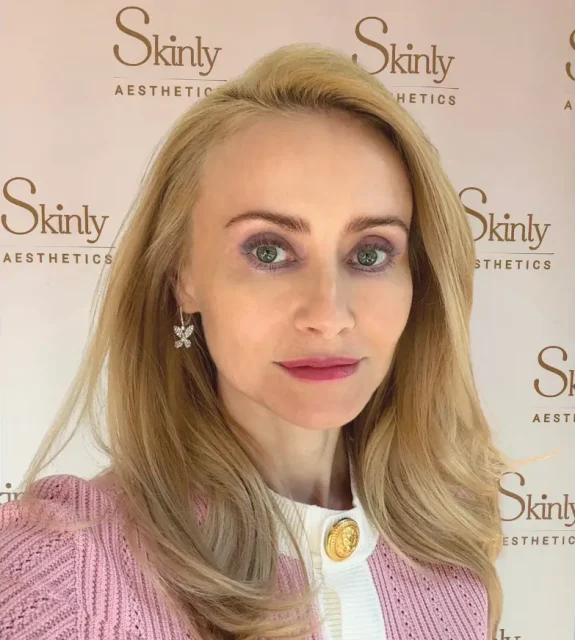Dr. Peter Andrade is a distinguished board-certified plastic surgeon and co-founder of Beautique Concierge, an innovative aesthetics and wellness brand redefining the treatment experience. With a focus on injectables and surgical procedures, Dr. Andrade brings a wealth of expertise to ensure a transformative and personalized experience for each patient.
 Photo Credit: Courtesy of Beautique Concierge
Photo Credit: Courtesy of Beautique Concierge
Embarking on the transformative journey of breast reconstruction, the DIEP flap procedure stands as a beacon of innovation and precision. This intricate surgical technique represents a groundbreaking advancement in reconstructive surgery, utilizing the body's natural tissue to recreate a natural and aesthetically pleasing look. Haute Beauty expert Dr. Peter Andrade of Beautique Concierge is here to provide you with answers to all your inquiries regarding the unique DIEP flap surgery, ensuring you are thoroughly informed about this exclusive procedure that he offers to his patients.
Understanding the DIEP Flap for Breast Reconstruction Post-Mastectomy
DIEP flaps are a type of “natural breast reconstruction" using your own body to reconstruct the breasts. DIEP flap stands for Deep Inferior Epigastric Perforator flap and denotes the anatomy of where the flap is taken from on the body. DIEP flaps are muscle-preserving flaps taken from the lower abdominal region typically where we have extra fatty tissue and skin. Virtually the same incisions as a traditional tummy tuck are used when performing a DIEP flap. The fatty tissue and skin are used to recreate the breast mound after the vessels on the DIEP flap are reconnected to vessels in the chest. In my opinion, DIEP flaps yield the most realistic long-term results.
Key Differences Between DIEP Flap and Traditional Implant-Based Breast Reconstruction
Both DIEP flaps (using your own abdominal fatty tissue) and breast implants are powerful surgical techniques to reconstruct the breasts. In breast reconstruction after mastectomy, we know that DIEP flaps usually perform better than breast implants in terms of longevity, feel, and natural appearance. Breast implants need to be changed every 10 years while DIEP flaps last a lifetime. DIEP flaps are excised from your abdomen similar to a tummy tuck. In the case of a DIEP flap, the tummy tuck tissue is not discarded but used to reconstruct your breasts. By excising the tummy tuck tissue along with its blood supply, we can reconnect the abdominal fat tissue to your breasts to leave a natural result that will last a lifetime. In the case of implants, we have to change them every 10 years. In the age of breast implant illness and associated implant lymphomas, DIEP flaps are becoming more desired by patients. Studies have consistently shown that DIEP flap patients are extremely satisfied with the results.
Discovering Eligibility
A perfect candidate for a DIEP flap is a woman who had a mastectomy with or without implant reconstruction and who has some extra weight in the abdominal region. In other words, patients with breast implants in place after mastectomy are still candidates for natural breast reconstruction with DIEP flaps as long as they have some extra fatty tissue in the lower abdomen.
 Photo Credit: Courtesy of Beautique Concierge
Photo Credit: Courtesy of Beautique Concierge
Unveiling the Advantages
There are a multitude of benefits when using your own body tissue with DIEP flaps for breast reconstruction over traditional implant-based reconstruction. DIEP flaps consist of your own body so there is no chance of rejection or foreign body reaction as there is with a breast implant. The breast will feel like natural soft and supple tissue. The appearance also has a much more natural look. Lastly, the results of the DIEP flap age with you and last a lifetime as opposed to implants which are recommended to be changed every 10 years.
Seamless Transitions
Many patients come to my practice to switch from implant-based reconstruction to natural DIEP flap breast reconstruction.
Insurance Coverage
Most insurance plans will cover the DIEP flap and other natural breast reconstructions.
Unraveling Challenges and Advances in Achieving Sensory Restoration in Breast Reconstruction After Mastectomy
During a mastectomy of the breasts, all breast tissue is removed which includes the sensory nerves. The removal of the sensory nerves leads to permanent numbness of the breast and nipples. We have now developed techniques to reconstruct the sensory nerves that are cut during a mastectomy to restore nerve sensation to the breasts. New data shows that patients can regain sensation of the breast and nipples after mastectomies. Ideally, the nerve reconstruction is done at the same time as the mastectomy, but can in certain instances, be offered to patients at a later date. We use nerve grafts to replace the cut nerves. These nerve grafts are meticulously connected to your own nerves using loupe magnification and tiny sutures to restore sensation. Re-sensation, however, does take some time to regenerate. It typically takes about a year to regain sensation after a nerve reconstruction.
Tailored Choices
Like anything else in my practice, we have to weigh the risks vs. the benefits of the DIEP flap breast reconstruction. First and foremost we have to make sure it is safe for a patient to undergo a natural breast reconstruction. Secondly, I have to evaluate if the patient has enough lower abdominal fat to accomplish the patient's goals of breast reconstruction.
 Photo Credit: Courtesy of Beautique Concierge
Photo Credit: Courtesy of Beautique Concierge
Recovery Insights and Potential Risks
You can expect a 2-3 day hospital stay after the procedure to monitor the DIEP flaps. Like most surgeries, recovery usually takes about six weeks. Pain is tolerated very well. Major risks are loss of the DIEP flap due to poor blood flow, fat necrosis where some of the fat dies off, and abdominal hernia. Additionally, bleeding and infection are rare.
Beyond The DIEP Flap
Further procedures are normal and usually take place at a later date. I perform revisions of the flap which typically includes liposuction and fat grafting to the breasts to tweak symmetry and contour. Fat grafting is a normal part of breast reconstruction after DIEP flaps or even after implant-based surgery. Fat grafting is covered by insurance and comes with the added benefit of liposuction to harvest the fat!
Please email Dr. Peter Andrade to see if the DIEP flap surgery is the right choice for you.
For more information, visit Beautique Concierge's social media:





















